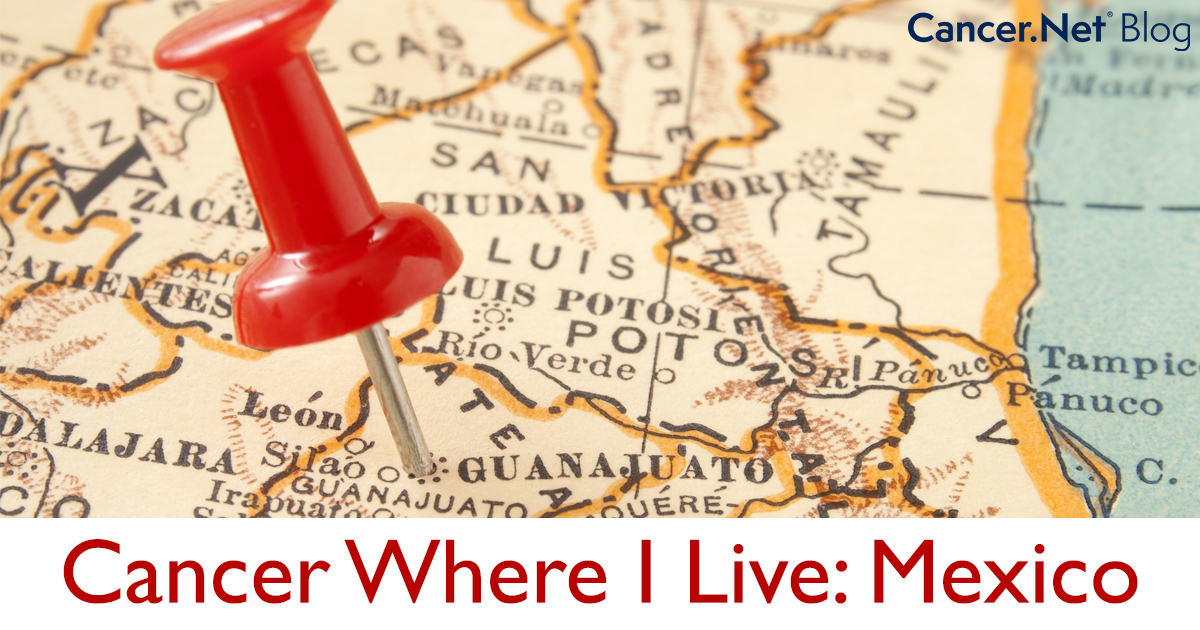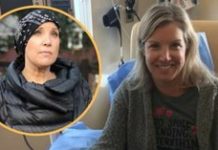
Cancer in My Community is a Cancer.Net Blog series that shows the global impact of cancer and how people work to care for those with cancer in their region. Karina Senyase Zamarripa Martinez, MD, is a pediatric oncologist at the Hospital Regional de Alta Especialidad del Bajio in León in Guanajuato, Mexico. Dr. Zamarripa Martinez actively participates in the St. Jude Global Alliance and in the State Council for Cancer in Children and Adolescents. She is currently completing her master’s degree in clinical research at the University of Guanajuato. You can follow Dr. Zamarripa Martinez on Twitter. View Dr. Zamarripa Martinez’s disclosures.
Why I care for people with cancer
At the end of high school, I knew that I wanted to be a pediatrician. My initial interest was in neonatal care. However, during my pediatric residency at the Federico Gómez Children’s Hospital of Mexico, I was drawn to helping diagnose, treat, and improve the quality of life of children with cancer. That’s how I decided to become a pediatric oncologist.
My interests in caring for children with cancer and their families include early detection of the disease; timely, adequate, and equitable treatment; and quality of life during treatment and throughout survivorship. I feel honored and happy when the families and children I care for integrate me into their multidisciplinary cancer care teams.
What childhood cancer is like in Mexico
According to the Population of the Municipalities of Mexico 2010-2030 of the National Population Council (CONAPO), in 2018, there were nearly 45 million children and adolescents in Mexico between the ages of 0 and 19. Of those, nearly 26.5 million did not have any type of social security. This is worrisome because cancer is an expensive disease that can require large out-of-pocket expenses, which can lead to financial difficulties for families.
According to data from the Child and Adolescent Cancer Registry (RCNA), the cancer incidence rates in Mexico in 2017 were 111.4 cancer cases per 1 million children ages 9 or younger and 68.1 cancer cases per 1 million teens ages 10 to 19. Babies and young children had the highest cancer incidence rate, with 135.8 cancer cases per 1 million children ages 4 and younger. Meanwhile, older teens had the lowest incidence rate, with 52.6 cancer cases per 1 million teens between the ages of 15 and 19.
I live in Guanajuato, which is a state of Mexico with 6.1 million inhabitants. Leon is the largest city in the state, which has 1.5 million residents. I am part of the team at the Hospital Regional de Alta Especialidad del Bajio, where we provide totally free care for patients without social security.
Childhood cancer is a serious public health problem in Mexico, with cases progressively increasing in recent years. Approximately 100 to 150 cases are diagnosed annually in Guanajuato alone, most of which are detected in Leon. The cancers we diagnose most frequently in children are acute leukemia and central nervous system tumors.
The average length of time from the start of a child’s symptoms or suspicion of cancer to their first contact with the pediatric oncologist or hematologist varies from 7 to 30 days for children with acute leukemia to 14 to 200 days for children with solid tumors. This is a serious problem in our country since it can lead to delayed diagnosis and treatment. It also helps explain why in low- and middle-income countries, cancer survival is lower than in high-income countries. The “patient journey” from primary care to the pediatric oncologist or hematologist is very complicated in our city, with multiple administrative steps that create delays in patients getting the medical attention they need. As a cancer care community, we are working to reduce the time patients face waiting for referrals and improve pediatric cancer survival.
It is important for families in Mexico to know that pediatric cancer is often curable if it is found early. If your child experiences suspicious signs or symptoms, go to the pediatrician in a timely manner. And remember that, in Mexico, the coverage of pediatric cancer treatment is free at various health institutions.
Where people with cancer can find local resources and support
There are several online government resources available for children with cancer and their families, such as the Centro Nacional para la Salud de la Infancia y Adolescencia, Hospital Regional de Alta Especialidad del Bajio, and Agrupación Mexicana de Onco Hematología Pediátrica. There are also nonprofit organizations that help children with cancer, such as the Asociacion Mexicana de Ayuda a Niños con Cáncer, I.A.P.







